The following tutorial shows the user how to create an instrument track in Pro Tools.
CLICK HERE to learn Avid Pro Tools one on one with a digital audio professional at OBEDIA.
Just as any other Digital Audio Workstation, Pro Tools has the ability to record and edit MIDI information that can be used to trigger Virtual Instruments. This can be done by using an “Instrument Track” in Pro Tools. These instrument tracks are capable of receiving MIDI information coming from a MIDI controller, and sending it to a Virtual Instrument that will output digital audio information. In other words, the input to an Instrument track is MIDI information, while the output is digital audio that comes from the Virtual Instrument applied.
An Instrument track gives the user the possibility of adding inserts to modify the audio signal that it creates, in fact, the very first insert must be the virtual instrument selected so that it can be triggered by the MIDI information received by the track.
This tutorial will present a step-by-step guide on how to create and setup an instrument track for proper use in Pro Tools. This tutorial assumes the user has already configured a MIDI keyboard/controller for use in Pro Tools.
1. Open or create a new Pro Tools session and make sure you can see the Edit window:
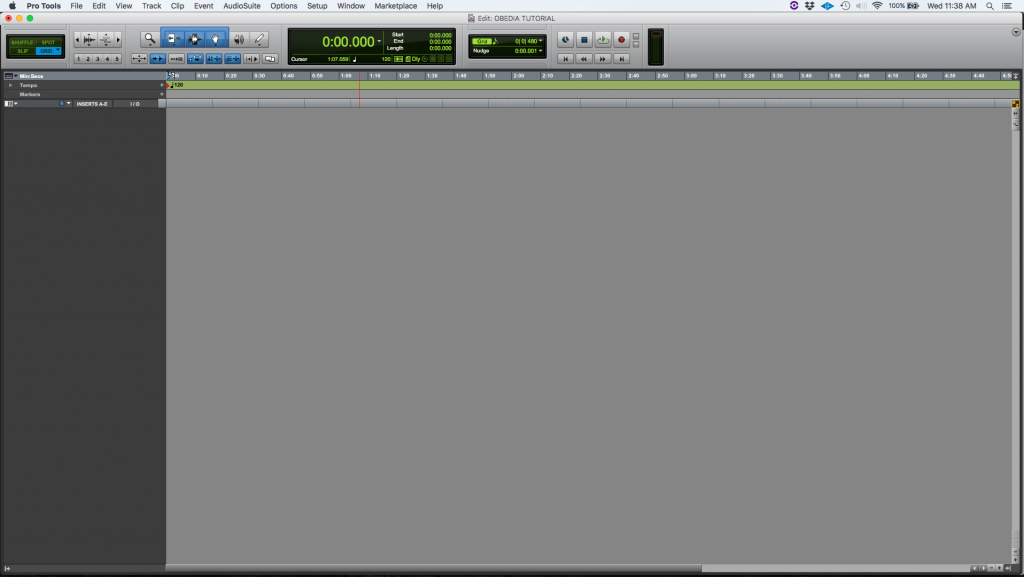
2. At the top menu bar click on: Track -> New.
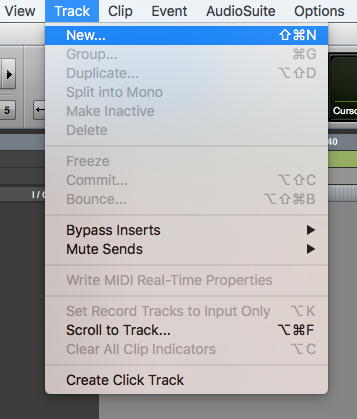
3. The New Tracks window will appear as:

4. Set the New Tracks window to create a new instrument track:
In order to do this, we must evaluate all the possibly options this window presents, these are:
- Create: It lets the user type the number of tracks that wants to be created.
- Mono/Stereo: This drop-down list lets the user select if the created tracks will be mono (single audio channel) or stereo (two audio channels, left and right).
- Track type: This drop-down list, lets the user select the type of tracks that will be created, the available options are: Audio track, Aux Input, Master Fader, VCA Master, MIDI Track, Instrument Track.
- Samples/Ticks: This drop-down list, lets the user select between sample-based tracks (normally used for audio content) or tick-based tracks (normally used for MIDI information).
For the purpose of this tutorial we will create a single instrument track, ticks-based. The parameters of the New Tracks window will be set as:
- Create: 1.
- Mono/Stereo: Stereo.
- Track type: Instrument Track.
- Samples/Ticks: Ticks.
Our New Tracks window should look like this:

5. Press “Create” to create the track. As soon as this button is pressed, the window will close and the program will take us back to the Edit window:
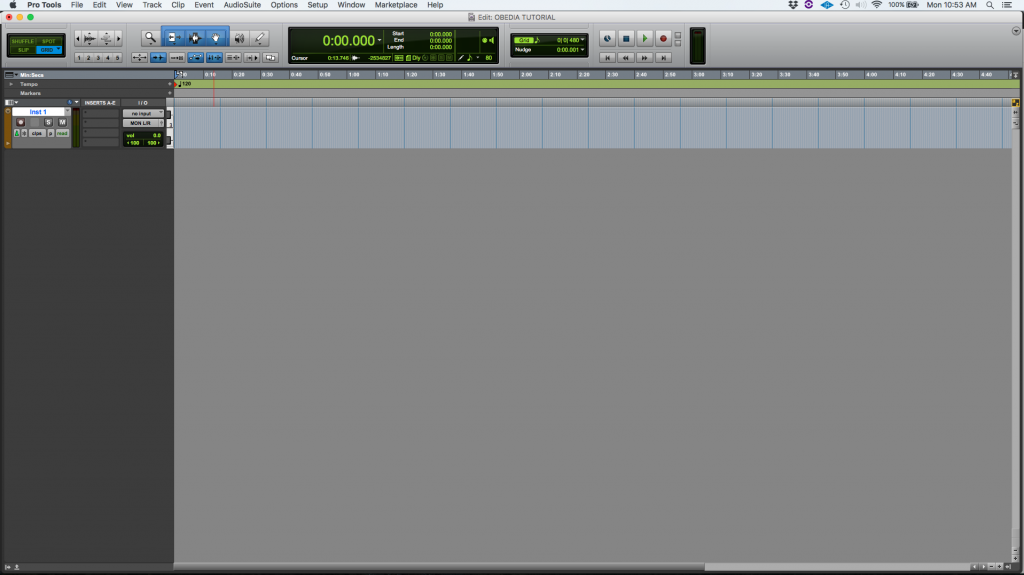
It is easy to see how we have one track at the left of the screen labeled as “Inst 1”. This is the default name Pro Tools will give to the instrument tracks, but they can be changed by double-clicking on the names.
Now that we have created our track, we must assign the virtual instrument to it. This can be done from the insert list at the Edit Window:

It is easy to see how the Edit Window shows a list of Inserts that appears to be black by default. For the purpose of this tutorial we will add the basic Pro Tools piano “Mini Grand” at the very first insert slot at the top.
6. Click on the first Insert slot of the track to add a new Virtual Instrument. Once clicked navigate through the list as: Multichannel Plugin -> Instrument -> Mini Grand:
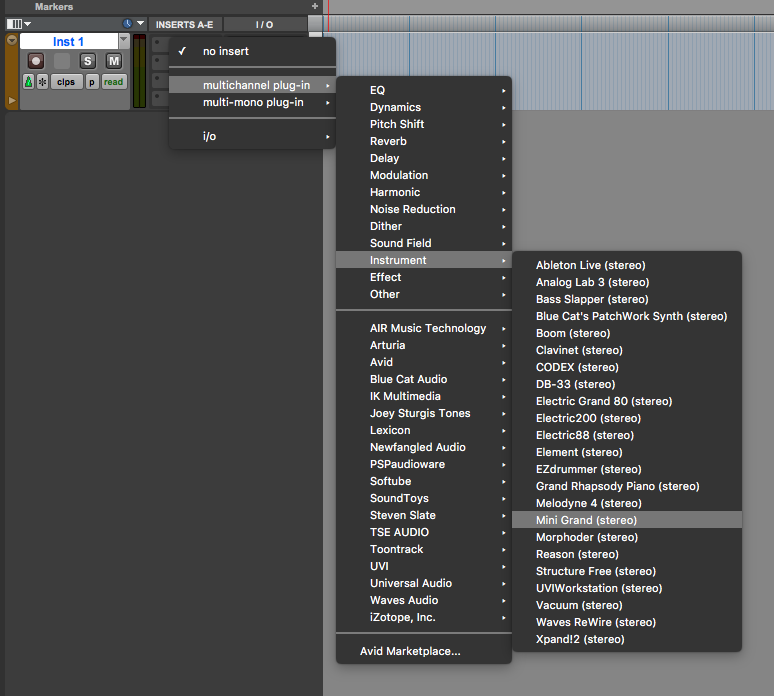
Once “Mini Grand” has been selected, it will appear as the first insert of our Instrument track and open the instrument’s graphical interface as:
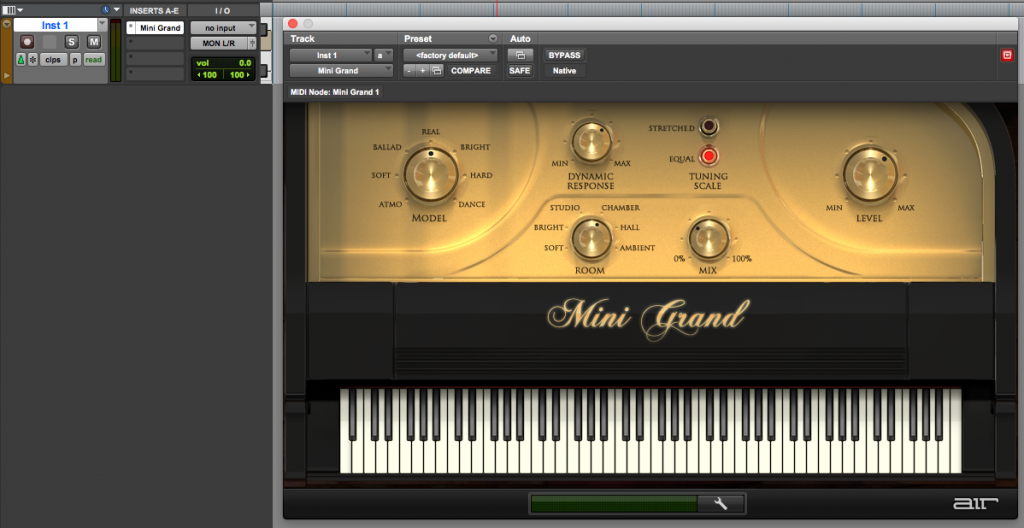
The next step of the process is to setup the MIDI input and output of the track. This can be done from the “Instruments view” of the Edit Window, which is hidden by default, therefore we must show this view.
7. In order to show the “Instruments view” of the Edit Window, click on the top menu bar: View -> Edit Window -> Instruments:
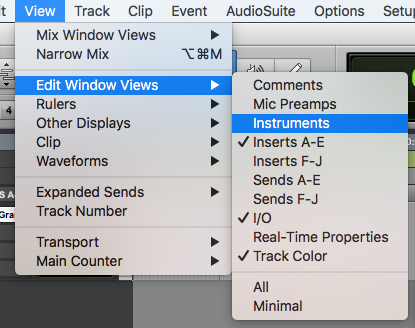
Once clicked, the Edit Window will now show the Instrument view as:

This Instrument view has two main configurations we must understand, these are: MIDI Input Selector and MIDI Output Selector.
By default, the MIDI Input Selector is set to “All” which means, the track will receive MIDI information from all MIDI controllers connected; this will be correct if we only have a single controller connected to our computer, but if we have several, we must click on “All” to select from the list the proper MIDI keyboard to trigger this track.
The MIDI output selector has been set automatically to “MiniGrand 1-1”, which means it will send the MIDI information to the MiniGrand channel #1. The MiniGrand will receive the MIDI information and output digital audio through the analog output “MON L/R” (that appears as the selected output from the I/O area of the Edit Window view of the track).
8. Press the “Record Enable” button of the track in order to arm the track for recording, the button will turn on red as:

At this point the user can play the MIDI controller and listen to the Piano coming out of the main analog outputs (labeled as “MON L/R” in this case). The recording can be done at any time now.
We have successfully created and configured an Instrument track. The tutorial has now finished.
We hope you found this tutorial on How to create an Instrument Track in Pro Tools useful!
CLICK HERE to learn Avid Pro Tools one on one with a digital audio professional at OBEDIA.
